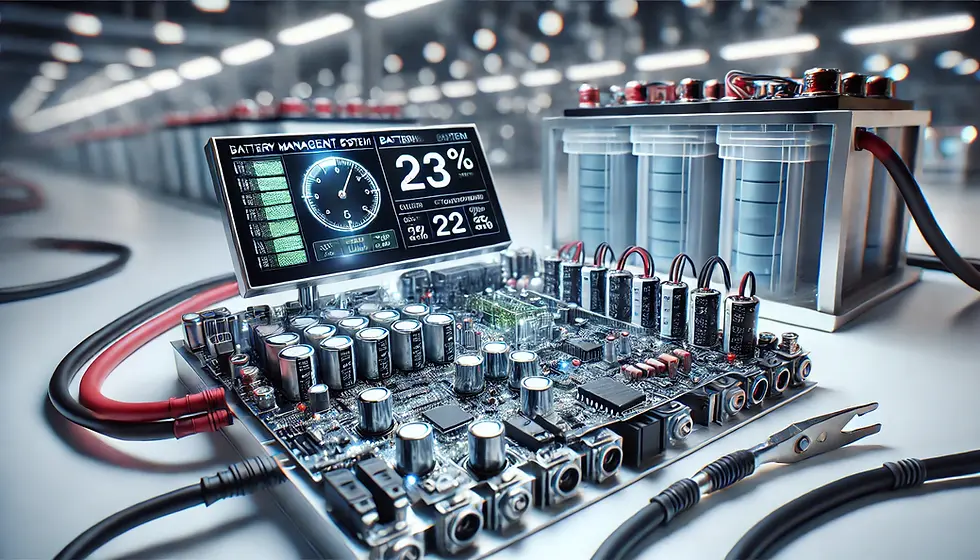How PCBs Are Powering the Next Generation of Household Appliances
- SUNSOAR TE.
- Dec 18, 2024
- 4 min read
The Basics of PCBs
What Are PCBs?
Printed Circuit Boards, or PCBs for short, are the unsung heroes of the electronics world. They're like the meticulously planned cities for electrons, made up of layers of insulating materials laminated with conductive copper tracks. These tracks are etched with precision, creating a complex network that serves as the nervous system for electronic devices. At its core, a PCB provides a sturdy platform where all the essential electronic components – resistors, capacitors, integrated circuits, and more – find their designated spots and get electrically interconnected. Without PCBs, our modern electronic gadgets, especially household appliances, would be a chaotic mess of tangled wires, rendering most of them practically unusable.

The Evolution of PCBs
From their humble beginnings decades ago, PCBs have come a long way. In the early days, they were relatively simple, single-layered affairs, capable of handling basic circuitry for rudimentary electronics. But as technology sprinted forward, so did PCBs. The advent of multilayer PCBs was a game-changer. Suddenly, more components could be squeezed into a compact space, allowing for the miniaturization of devices. We witnessed the shift from through-hole components to surface-mount technology, which not only saved space but also sped up the manufacturing process. And now, as we stand on the cusp of a new era of household appliances, PCBs are evolving yet again to meet the demands of smart, energy-efficient, and highly connected homes.
PCBs in Current Household Appliances
Common Appliances That Rely on PCBs
Take a peek inside your kitchen, and you'll find PCBs hard at work. That trusty microwave oven? Its PCB coordinates the power levels, manages the timer, and controls the magnetron that generates the microwaves. In the living room, your flat-screen TV owes its vivid display and seamless channel surfing to the PCB that meticulously distributes signals to the right pixels and processes the incoming video feeds. And don't forget the washing machine, where the PCB oversees the motor speed, water intake, and spin cycles, ensuring your clothes come out clean without you having to babysit the appliance.
How PCBs Improve Appliance Performance
PCBs are the maestros conducting the symphony of appliance performance. By optimizing the circuit layout, they minimize signal loss and interference, leading to faster and more accurate data transmission. For example, in a high-end refrigerator, the PCB enables precise temperature regulation, constantly adjusting the cooling system to keep your groceries fresh while saving energy. In air conditioners, it helps in modulating the compressor speed for efficient cooling and heating, reducing those pesky energy bills. And in smart speakers, the PCB allows for crystal-clear audio output by ensuring the seamless integration of audio chips and wireless connectivity modules.
The Role of PCBs in Next-Generation Household Appliances
Emerging Technologies Enabled by PCBs
The next-gen household appliances are set to be a technological marvel, and PCBs are at the heart of it all. With the rise of the Internet of Things (IoT), our appliances will talk to each other and to us. PCBs embedded with Wi-Fi, Bluetooth, and other wireless communication chips will make it possible for your coffee maker to start brewing as soon as your alarm clock rings, because they're all part of a connected ecosystem. Augmented reality (AR) interfaces in kitchen appliances? PCBs will power the displays and process the AR data, guiding you through complex recipes step by step. And in-home energy management systems will rely on PCBs to monitor and optimize power usage across all your devices.
Design Innovations in PCBs for Future Appliances
The future demands slimmer, sleeker, and smarter appliances, and PCBs are rising to the challenge. Designers are pushing the boundaries with flexible PCBs that can curve and bend, opening up new form factors for appliances. Imagine a rollable TV or a wearable air purifier – it's all possible with flexible PCB technology. Miniaturization is also in full swing, with components getting tinier and PCBs packing more punch in less space. And let's not forget about sustainability. Eco-friendly materials and manufacturing processes for PCBs are emerging, ensuring that our future appliances are not only high-tech but also kind to the planet.
Challenges and Solutions in PCB Application for Household Appliances
Technical Challenges
It's not all smooth sailing, though. As appliances become more powerful and compact, heat dissipation becomes a Herculean task for PCBs. The confined spaces mean that heat can build up quickly, potentially frying the delicate components. Electromagnetic interference (EMI) is another pesky issue. With multiple wireless and high-frequency components crammed together, EMI can disrupt signals and cause appliances to misbehave. And as we demand more complex functions, the sheer complexity of PCB design is skyrocketing, making it harder to ensure reliability and manufacturability.
Solutions and Future Prospects
Thankfully, the industry is not sitting idle. Advanced heat sinks, thermal vias, and phase-change materials are being integrated into PCBs to keep temperatures in check. Shielding techniques and EMI filters are being refined to combat interference. And with the help of sophisticated design software and artificial intelligence, engineers can now simulate and optimize PCB designs more effectively, reducing errors and speeding up development. The future of PCBs in household appliances is bright, with endless possibilities waiting to be unlocked.
Conclusion
PCBs have been, are, and will continue to be the driving force behind the evolution of household appliances. They've transformed our homes from places of basic functionality to smart, connected havens. As we look ahead, we can't wait to see what new wonders PCBs will enable in our daily lives. So, the next time you switch on your dishwasher or curl up in front of your smart TV, spare a thought for these incredible, invisible heroes that make it all possible. #PCBs #HouseholdAppliances #TechInnovation



Comentarios